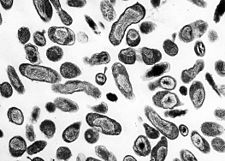* Due to an intracellular bacteria (macrophages) Coxiella burnetii.
* This is a ubiquitous zoonosis; human contamination is mainly by domestic animals (sheep, goats, cattle) inhalation of contaminated aerosols; contamination by ingestion of dairy products possible; and by the policy.
* Acute Q fever: the average incubation period is 3 weeks; febrile hepatitis is the most common mode of presentation (cholestasis is rare); febrile disease (2nd presentation mode); isolated fever is rare …
* Biological signs (acute Q fever) thrombocytopenia; NFS usually normal; sometimes Auto-Ac (circulating anticoagulants, anti-mitochondria, anti-smooth muscle).
* Chronic Q fever: if evolving for more than 6 months.
Represents 5% of fevers Q. main event is endocarditis (negative blood cultures).
The VS is high; leukocytosis in 60% of cases.
Circulating immune complexes in 90% of cases. Latex and Waaler Rose + in 60% of cases.
* Diagnosis is serological with IFIs (reference method).
The acute form is defined by the increase in anti-phase II C. burnetii Ac.
The chronic form is defined by higher Acts against the Phase I C. burnetii.
* The antibiotics of choice for acute shape are cyclins (doxycycline 200 mg / l for 2 weeks).
In case of allergy rifampicin, fluoroquinolones.
* The treatment of the chronic form includes the addition of an alkalizing agent (chloroquine) to doxycycline (600 mg / day for 18 months).


Leave a Reply